1/
As kidney replacement therapies (KRT) have become a strained and limited resource during the #COVID19 pandemic, here is a quick #tweetorial on how these treatments work:
What is the main mechanism by which clearance is achieved during intermittent #hemodialysis?
As kidney replacement therapies (KRT) have become a strained and limited resource during the #COVID19 pandemic, here is a quick #tweetorial on how these treatments work:
What is the main mechanism by which clearance is achieved during intermittent #hemodialysis?
2/
KRT has 2 powers:
 https://abs.twimg.com/emoji/v2/... draggable="false" alt="1⃣" title="Keycap digit one" aria-label="Emoji: Keycap digit one">Clearance (removal of solutes, like potassium
https://abs.twimg.com/emoji/v2/... draggable="false" alt="1⃣" title="Keycap digit one" aria-label="Emoji: Keycap digit one">Clearance (removal of solutes, like potassium  https://abs.twimg.com/emoji/v2/... draggable="false" alt="🍌" title="Banana" aria-label="Emoji: Banana">)
https://abs.twimg.com/emoji/v2/... draggable="false" alt="🍌" title="Banana" aria-label="Emoji: Banana">)
 https://abs.twimg.com/emoji/v2/... draggable="false" alt="2⃣" title="Keycap digit two" aria-label="Emoji: Keycap digit two">Volume removal
https://abs.twimg.com/emoji/v2/... draggable="false" alt="2⃣" title="Keycap digit two" aria-label="Emoji: Keycap digit two">Volume removal  https://abs.twimg.com/emoji/v2/... draggable="false" alt="💧" title="Droplet" aria-label="Emoji: Droplet">
https://abs.twimg.com/emoji/v2/... draggable="false" alt="💧" title="Droplet" aria-label="Emoji: Droplet">
...and it comes in 2 flavors:
 https://abs.twimg.com/emoji/v2/... draggable="false" alt="1⃣" title="Keycap digit one" aria-label="Emoji: Keycap digit one">Intermittent
https://abs.twimg.com/emoji/v2/... draggable="false" alt="1⃣" title="Keycap digit one" aria-label="Emoji: Keycap digit one">Intermittent
 https://abs.twimg.com/emoji/v2/... draggable="false" alt="2⃣" title="Keycap digit two" aria-label="Emoji: Keycap digit two">Continuous
https://abs.twimg.com/emoji/v2/... draggable="false" alt="2⃣" title="Keycap digit two" aria-label="Emoji: Keycap digit two">Continuous
KRT has 2 powers:
...and it comes in 2 flavors:
3/ How does the potassium go from 7.2 meq/L to 4 after an intermittent #hemodialysis (iHD) session?
Chemistry 101: DIFFUSION!
Solutes are cleared via diffusion as they move https://abs.twimg.com/emoji/v2/... draggable="false" alt="⬇️" title="Downwards arrow" aria-label="Emoji: Downwards arrow"> their concentration gradient across a SEMIPERMEABLE membrane
https://abs.twimg.com/emoji/v2/... draggable="false" alt="⬇️" title="Downwards arrow" aria-label="Emoji: Downwards arrow"> their concentration gradient across a SEMIPERMEABLE membrane
DOI: 10.1056/NEJMc1301071
Chemistry 101: DIFFUSION!
Solutes are cleared via diffusion as they move
DOI: 10.1056/NEJMc1301071
4/ A closer look at that dialysis filter...
Blood runs through the filter "straws", while the dialysate runs in the opposite direction https://abs.twimg.com/emoji/v2/... draggable="false" alt="🔃" title="Clockwise downwards and upwards open circle arrows" aria-label="Emoji: Clockwise downwards and upwards open circle arrows"> around them & does not come in direct contact with the
https://abs.twimg.com/emoji/v2/... draggable="false" alt="🔃" title="Clockwise downwards and upwards open circle arrows" aria-label="Emoji: Clockwise downwards and upwards open circle arrows"> around them & does not come in direct contact with the  https://abs.twimg.com/emoji/v2/... draggable="false" alt="🩸" title="Drop of blood" aria-label="Emoji: Drop of blood">
https://abs.twimg.com/emoji/v2/... draggable="false" alt="🩸" title="Drop of blood" aria-label="Emoji: Drop of blood">
Larger filters with bigger pores can be used to further optimize clearance.
Blood runs through the filter "straws", while the dialysate runs in the opposite direction
Larger filters with bigger pores can be used to further optimize clearance.
5/ Strategies to maximize clearance (particularly relevant now given the #COVID19-related strain on KRT):
 https://abs.twimg.com/emoji/v2/... draggable="false" alt="1⃣" title="Keycap digit one" aria-label="Emoji: Keycap digit one">Bigger filter size
https://abs.twimg.com/emoji/v2/... draggable="false" alt="1⃣" title="Keycap digit one" aria-label="Emoji: Keycap digit one">Bigger filter size
 https://abs.twimg.com/emoji/v2/... draggable="false" alt="2⃣" title="Keycap digit two" aria-label="Emoji: Keycap digit two">Higher dialysis blood flow rates (usually, these are 300-400 cc/min)
https://abs.twimg.com/emoji/v2/... draggable="false" alt="2⃣" title="Keycap digit two" aria-label="Emoji: Keycap digit two">Higher dialysis blood flow rates (usually, these are 300-400 cc/min)
 https://abs.twimg.com/emoji/v2/... draggable="false" alt="3⃣" title="Keycap digit three" aria-label="Emoji: Keycap digit three">Widen the concentration gradient and try a potassium-free dialysate
https://abs.twimg.com/emoji/v2/... draggable="false" alt="3⃣" title="Keycap digit three" aria-label="Emoji: Keycap digit three">Widen the concentration gradient and try a potassium-free dialysate
6/ So that& #39;s how we remove solute. What about the fluid?
Ultrafiltration (UF), or ISOTONIC fluid removal, is achieved via pressure that is exerted across the membrane that drives fluid out.
DOI: 10.1056/NEJMct1206045 @luck_urine
Ultrafiltration (UF), or ISOTONIC fluid removal, is achieved via pressure that is exerted across the membrane that drives fluid out.
DOI: 10.1056/NEJMct1206045 @luck_urine
7/ Here& #39;s what goes into the iHD order:
 https://abs.twimg.com/emoji/v2/... draggable="false" alt="1⃣" title="Keycap digit one" aria-label="Emoji: Keycap digit one">Access, blood flow, + dialysate flow rates (standard 800 cc/min)
https://abs.twimg.com/emoji/v2/... draggable="false" alt="1⃣" title="Keycap digit one" aria-label="Emoji: Keycap digit one">Access, blood flow, + dialysate flow rates (standard 800 cc/min)
 https://abs.twimg.com/emoji/v2/... draggable="false" alt="2⃣" title="Keycap digit two" aria-label="Emoji: Keycap digit two">Dialysate composition
https://abs.twimg.com/emoji/v2/... draggable="false" alt="2⃣" title="Keycap digit two" aria-label="Emoji: Keycap digit two">Dialysate composition
 https://abs.twimg.com/emoji/v2/... draggable="false" alt="3⃣" title="Keycap digit three" aria-label="Emoji: Keycap digit three">Ultrafiltration volume
https://abs.twimg.com/emoji/v2/... draggable="false" alt="3⃣" title="Keycap digit three" aria-label="Emoji: Keycap digit three">Ultrafiltration volume
 https://abs.twimg.com/emoji/v2/... draggable="false" alt="4⃣" title="Keycap digit four" aria-label="Emoji: Keycap digit four">Filter size
https://abs.twimg.com/emoji/v2/... draggable="false" alt="4⃣" title="Keycap digit four" aria-label="Emoji: Keycap digit four">Filter size
 https://abs.twimg.com/emoji/v2/... draggable="false" alt="5⃣" title="Keycap digit five" aria-label="Emoji: Keycap digit five">Duration (standard 3.5hrs - though #COVID19 has forced shorter treatment times, affecting clearance)
https://abs.twimg.com/emoji/v2/... draggable="false" alt="5⃣" title="Keycap digit five" aria-label="Emoji: Keycap digit five">Duration (standard 3.5hrs - though #COVID19 has forced shorter treatment times, affecting clearance)
8/ What about SLED? (sustained low efficiency dialysis)
It& #39;s just like iHD, but...not as efficient...and should be done for longer durations (e.g. 8 hours) to obtain similar clearance to iHD
It& #39;s just like iHD, but...not as efficient...and should be done for longer durations (e.g. 8 hours) to obtain similar clearance to iHD
9/ Let& #39;s move on to the CONTINUOUS KRTs
The Players: CVVH, CVVHD, & CVVHDF
CVVH = continuous venovenous hemofiltration
CVVH is the only continuous modality that does NOT use a dialysate. So how do we get clearance?
 https://abs.twimg.com/emoji/v2/... draggable="false" alt="💥" title="Collision symbol" aria-label="Emoji: Collision symbol">REPLACEMENT FLUID
https://abs.twimg.com/emoji/v2/... draggable="false" alt="💥" title="Collision symbol" aria-label="Emoji: Collision symbol">REPLACEMENT FLUID https://abs.twimg.com/emoji/v2/... draggable="false" alt="💥" title="Collision symbol" aria-label="Emoji: Collision symbol">
https://abs.twimg.com/emoji/v2/... draggable="false" alt="💥" title="Collision symbol" aria-label="Emoji: Collision symbol">
The Players: CVVH, CVVHD, & CVVHDF
CVVH = continuous venovenous hemofiltration
CVVH is the only continuous modality that does NOT use a dialysate. So how do we get clearance?
10/ If you& #39;ve seen a pt connected to a #CVVH machine, you remember the huge bags hanging in the room - these are bags of replacement fluid that achieve clearance & are infused into the patient via the filter.
Hospitals can purchase pre-made replacement fluid (example below) https://abs.twimg.com/emoji/v2/... draggable="false" alt="👇🏽" title="Down pointing backhand index (medium skin tone)" aria-label="Emoji: Down pointing backhand index (medium skin tone)">
https://abs.twimg.com/emoji/v2/... draggable="false" alt="👇🏽" title="Down pointing backhand index (medium skin tone)" aria-label="Emoji: Down pointing backhand index (medium skin tone)">
Hospitals can purchase pre-made replacement fluid (example below)
11/ Remember that replacement fluid is essentially infused unchanged into the pt, so use caution in those with hypoNa to avoid overcorrection
Of note: Therapy fluid can be infused either before or after the CVVH filter. If you do it before, may lose some solute (via convection)
Of note: Therapy fluid can be infused either before or after the CVVH filter. If you do it before, may lose some solute (via convection)
12/ The graphic below illustrates the differences between #CVVH, #CVVHD, and #CVVHDF
CVVH: https://abs.twimg.com/emoji/v2/... draggable="false" alt="✅" title="White heavy check mark" aria-label="Emoji: White heavy check mark">Convection + replacement fluid;
https://abs.twimg.com/emoji/v2/... draggable="false" alt="✅" title="White heavy check mark" aria-label="Emoji: White heavy check mark">Convection + replacement fluid;  https://abs.twimg.com/emoji/v2/... draggable="false" alt="⛔️" title="No entry" aria-label="Emoji: No entry">dialysate
https://abs.twimg.com/emoji/v2/... draggable="false" alt="⛔️" title="No entry" aria-label="Emoji: No entry">dialysate
CVVHD https://abs.twimg.com/emoji/v2/... draggable="false" alt="✅" title="White heavy check mark" aria-label="Emoji: White heavy check mark">Dialysate + convection;
https://abs.twimg.com/emoji/v2/... draggable="false" alt="✅" title="White heavy check mark" aria-label="Emoji: White heavy check mark">Dialysate + convection;  https://abs.twimg.com/emoji/v2/... draggable="false" alt="⛔️" title="No entry" aria-label="Emoji: No entry"> replacement fluid
https://abs.twimg.com/emoji/v2/... draggable="false" alt="⛔️" title="No entry" aria-label="Emoji: No entry"> replacement fluid
CVVHDF: https://abs.twimg.com/emoji/v2/... draggable="false" alt="✅" title="White heavy check mark" aria-label="Emoji: White heavy check mark">Dialysate + convection + replacement fluid
https://abs.twimg.com/emoji/v2/... draggable="false" alt="✅" title="White heavy check mark" aria-label="Emoji: White heavy check mark">Dialysate + convection + replacement fluid
@RenalFellowNtwk #FOAMed
CVVH:
CVVHD
CVVHDF:
@RenalFellowNtwk #FOAMed
13/ Say you only need volume removal, but no clearance:
Use your resources wisely and opt for a pure- #convection therapy:
Slow continuous ultrafiltration ( #SCUF) AKA aquapheresis or "CHF Solutions"
Don& #39;t waste dialysate or replacement fluid if you don& #39;t need it!
#COVID19
Use your resources wisely and opt for a pure- #convection therapy:
Slow continuous ultrafiltration ( #SCUF) AKA aquapheresis or "CHF Solutions"
Don& #39;t waste dialysate or replacement fluid if you don& #39;t need it!
#COVID19
14/ Compared to iHD, continuous KRT will achieve slower clearance & volume removal  https://abs.twimg.com/emoji/v2/... draggable="false" alt="🐢" title="Turtle" aria-label="Emoji: Turtle"> (e.g. 100 cc/hr vs 1L/hr)
https://abs.twimg.com/emoji/v2/... draggable="false" alt="🐢" title="Turtle" aria-label="Emoji: Turtle"> (e.g. 100 cc/hr vs 1L/hr)
PIRRT = "middle ground" and uses higher RF rates to lower tx times & has been used during #COVID19 pandemic to maximize CKRT machine use https://abs.twimg.com/emoji/v2/... draggable="false" alt="👇🏽" title="Down pointing backhand index (medium skin tone)" aria-label="Emoji: Down pointing backhand index (medium skin tone)">
https://abs.twimg.com/emoji/v2/... draggable="false" alt="👇🏽" title="Down pointing backhand index (medium skin tone)" aria-label="Emoji: Down pointing backhand index (medium skin tone)">
https://www.nxstage.com/hcp/therapies/pirrt/">https://www.nxstage.com/hcp/thera...
PIRRT = "middle ground" and uses higher RF rates to lower tx times & has been used during #COVID19 pandemic to maximize CKRT machine use
https://www.nxstage.com/hcp/therapies/pirrt/">https://www.nxstage.com/hcp/thera...
15/ In summary:
 https://abs.twimg.com/emoji/v2/... draggable="false" alt="1⃣" title="Keycap digit one" aria-label="Emoji: Keycap digit one"> KRT = continuous/intermittent
https://abs.twimg.com/emoji/v2/... draggable="false" alt="1⃣" title="Keycap digit one" aria-label="Emoji: Keycap digit one"> KRT = continuous/intermittent
 https://abs.twimg.com/emoji/v2/... draggable="false" alt="2⃣" title="Keycap digit two" aria-label="Emoji: Keycap digit two">Solute clearance: diffusion; UF: convection
https://abs.twimg.com/emoji/v2/... draggable="false" alt="2⃣" title="Keycap digit two" aria-label="Emoji: Keycap digit two">Solute clearance: diffusion; UF: convection
 https://abs.twimg.com/emoji/v2/... draggable="false" alt="3⃣" title="Keycap digit three" aria-label="Emoji: Keycap digit three">Modality choice: Volume/solute removal needs + what& #39;s available
https://abs.twimg.com/emoji/v2/... draggable="false" alt="3⃣" title="Keycap digit three" aria-label="Emoji: Keycap digit three">Modality choice: Volume/solute removal needs + what& #39;s available
 https://abs.twimg.com/emoji/v2/... draggable="false" alt="4⃣" title="Keycap digit four" aria-label="Emoji: Keycap digit four">Optimize treatments that may be shorter by
https://abs.twimg.com/emoji/v2/... draggable="false" alt="4⃣" title="Keycap digit four" aria-label="Emoji: Keycap digit four">Optimize treatments that may be shorter by  https://abs.twimg.com/emoji/v2/... draggable="false" alt="⬆️" title="Upwards arrow" aria-label="Emoji: Upwards arrow"> blood/RF flow rates, using larger filters, & tailoring your dialysate
https://abs.twimg.com/emoji/v2/... draggable="false" alt="⬆️" title="Upwards arrow" aria-label="Emoji: Upwards arrow"> blood/RF flow rates, using larger filters, & tailoring your dialysate
16/
And did not cover this above - but acute #PeritonealDialysis is another innovative and effective way to relieve some of the strain on resources like iHD & CVVH
Will let @osamaelshamy88 tackle that #tweetorial...
And did not cover this above - but acute #PeritonealDialysis is another innovative and effective way to relieve some of the strain on resources like iHD & CVVH
Will let @osamaelshamy88 tackle that #tweetorial...

 Read on Twitter
Read on Twitter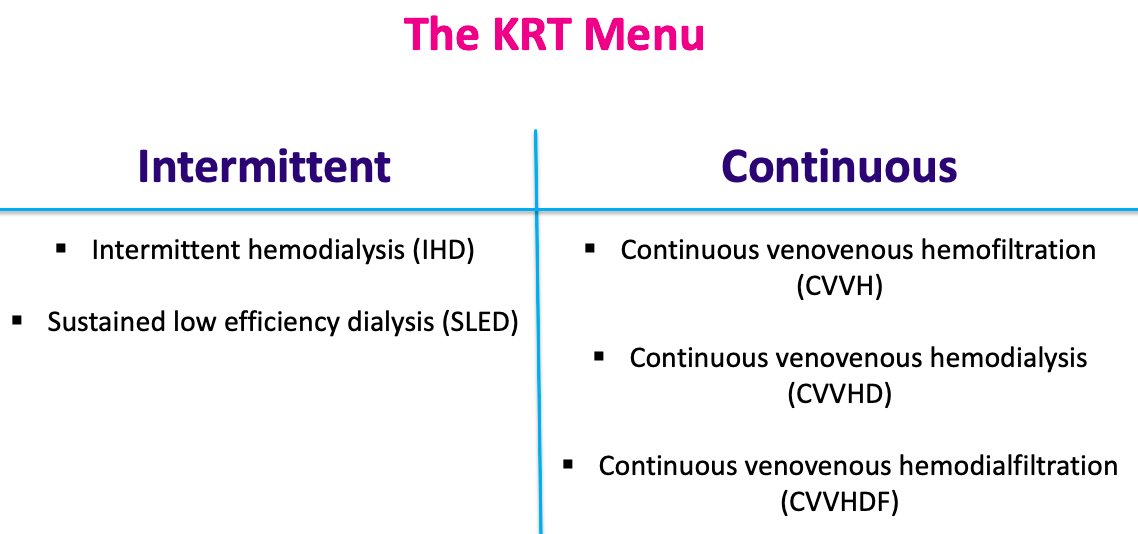 Clearance (removal of solutes, like potassium https://abs.twimg.com/emoji/v2/... draggable="false" alt="🍌" title="Banana" aria-label="Emoji: Banana">)https://abs.twimg.com/emoji/v2/... draggable="false" alt="2⃣" title="Keycap digit two" aria-label="Emoji: Keycap digit two">Volume removal https://abs.twimg.com/emoji/v2/... draggable="false" alt="💧" title="Droplet" aria-label="Emoji: Droplet">...and it comes in 2 flavors:https://abs.twimg.com/emoji/v2/... draggable="false" alt="1⃣" title="Keycap digit one" aria-label="Emoji: Keycap digit one">Intermittenthttps://abs.twimg.com/emoji/v2/... draggable="false" alt="2⃣" title="Keycap digit two" aria-label="Emoji: Keycap digit two">Continuous" title="2/KRT has 2 powers: https://abs.twimg.com/emoji/v2/... draggable="false" alt="1⃣" title="Keycap digit one" aria-label="Emoji: Keycap digit one">Clearance (removal of solutes, like potassium https://abs.twimg.com/emoji/v2/... draggable="false" alt="🍌" title="Banana" aria-label="Emoji: Banana">)https://abs.twimg.com/emoji/v2/... draggable="false" alt="2⃣" title="Keycap digit two" aria-label="Emoji: Keycap digit two">Volume removal https://abs.twimg.com/emoji/v2/... draggable="false" alt="💧" title="Droplet" aria-label="Emoji: Droplet">...and it comes in 2 flavors:https://abs.twimg.com/emoji/v2/... draggable="false" alt="1⃣" title="Keycap digit one" aria-label="Emoji: Keycap digit one">Intermittenthttps://abs.twimg.com/emoji/v2/... draggable="false" alt="2⃣" title="Keycap digit two" aria-label="Emoji: Keycap digit two">Continuous" class="img-responsive" style="max-width:100%;"/>
Clearance (removal of solutes, like potassium https://abs.twimg.com/emoji/v2/... draggable="false" alt="🍌" title="Banana" aria-label="Emoji: Banana">)https://abs.twimg.com/emoji/v2/... draggable="false" alt="2⃣" title="Keycap digit two" aria-label="Emoji: Keycap digit two">Volume removal https://abs.twimg.com/emoji/v2/... draggable="false" alt="💧" title="Droplet" aria-label="Emoji: Droplet">...and it comes in 2 flavors:https://abs.twimg.com/emoji/v2/... draggable="false" alt="1⃣" title="Keycap digit one" aria-label="Emoji: Keycap digit one">Intermittenthttps://abs.twimg.com/emoji/v2/... draggable="false" alt="2⃣" title="Keycap digit two" aria-label="Emoji: Keycap digit two">Continuous" title="2/KRT has 2 powers: https://abs.twimg.com/emoji/v2/... draggable="false" alt="1⃣" title="Keycap digit one" aria-label="Emoji: Keycap digit one">Clearance (removal of solutes, like potassium https://abs.twimg.com/emoji/v2/... draggable="false" alt="🍌" title="Banana" aria-label="Emoji: Banana">)https://abs.twimg.com/emoji/v2/... draggable="false" alt="2⃣" title="Keycap digit two" aria-label="Emoji: Keycap digit two">Volume removal https://abs.twimg.com/emoji/v2/... draggable="false" alt="💧" title="Droplet" aria-label="Emoji: Droplet">...and it comes in 2 flavors:https://abs.twimg.com/emoji/v2/... draggable="false" alt="1⃣" title="Keycap digit one" aria-label="Emoji: Keycap digit one">Intermittenthttps://abs.twimg.com/emoji/v2/... draggable="false" alt="2⃣" title="Keycap digit two" aria-label="Emoji: Keycap digit two">Continuous" class="img-responsive" style="max-width:100%;"/>
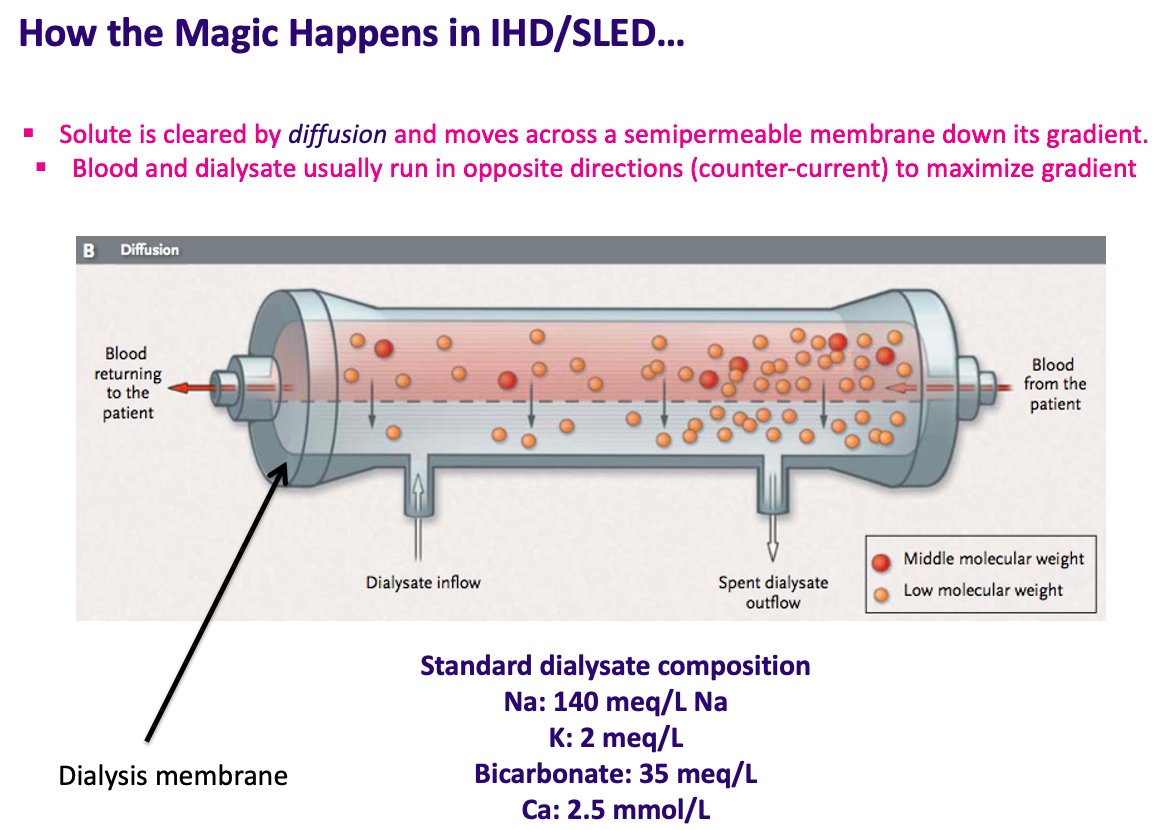 their concentration gradient across a SEMIPERMEABLE membraneDOI: 10.1056/NEJMc1301071" title="3/ How does the potassium go from 7.2 meq/L to 4 after an intermittent #hemodialysis (iHD) session? Chemistry 101: DIFFUSION! Solutes are cleared via diffusion as they move https://abs.twimg.com/emoji/v2/... draggable="false" alt="⬇️" title="Downwards arrow" aria-label="Emoji: Downwards arrow"> their concentration gradient across a SEMIPERMEABLE membraneDOI: 10.1056/NEJMc1301071" class="img-responsive" style="max-width:100%;"/>
their concentration gradient across a SEMIPERMEABLE membraneDOI: 10.1056/NEJMc1301071" title="3/ How does the potassium go from 7.2 meq/L to 4 after an intermittent #hemodialysis (iHD) session? Chemistry 101: DIFFUSION! Solutes are cleared via diffusion as they move https://abs.twimg.com/emoji/v2/... draggable="false" alt="⬇️" title="Downwards arrow" aria-label="Emoji: Downwards arrow"> their concentration gradient across a SEMIPERMEABLE membraneDOI: 10.1056/NEJMc1301071" class="img-responsive" style="max-width:100%;"/>
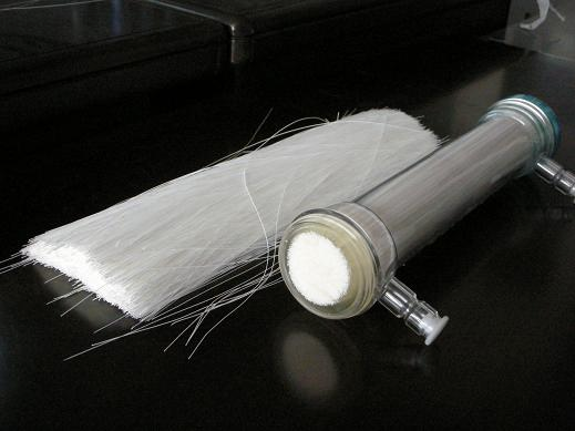 around them & does not come in direct contact with the https://abs.twimg.com/emoji/v2/... draggable="false" alt="🩸" title="Drop of blood" aria-label="Emoji: Drop of blood">Larger filters with bigger pores can be used to further optimize clearance." title="4/ A closer look at that dialysis filter...Blood runs through the filter "straws", while the dialysate runs in the opposite direction https://abs.twimg.com/emoji/v2/... draggable="false" alt="🔃" title="Clockwise downwards and upwards open circle arrows" aria-label="Emoji: Clockwise downwards and upwards open circle arrows"> around them & does not come in direct contact with the https://abs.twimg.com/emoji/v2/... draggable="false" alt="🩸" title="Drop of blood" aria-label="Emoji: Drop of blood">Larger filters with bigger pores can be used to further optimize clearance." class="img-responsive" style="max-width:100%;"/>
around them & does not come in direct contact with the https://abs.twimg.com/emoji/v2/... draggable="false" alt="🩸" title="Drop of blood" aria-label="Emoji: Drop of blood">Larger filters with bigger pores can be used to further optimize clearance." title="4/ A closer look at that dialysis filter...Blood runs through the filter "straws", while the dialysate runs in the opposite direction https://abs.twimg.com/emoji/v2/... draggable="false" alt="🔃" title="Clockwise downwards and upwards open circle arrows" aria-label="Emoji: Clockwise downwards and upwards open circle arrows"> around them & does not come in direct contact with the https://abs.twimg.com/emoji/v2/... draggable="false" alt="🩸" title="Drop of blood" aria-label="Emoji: Drop of blood">Larger filters with bigger pores can be used to further optimize clearance." class="img-responsive" style="max-width:100%;"/>
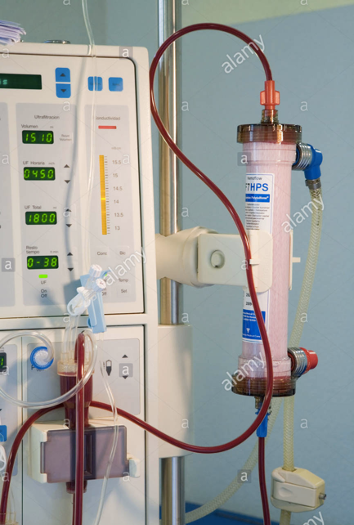 Bigger filter sizehttps://abs.twimg.com/emoji/v2/... draggable="false" alt="2⃣" title="Keycap digit two" aria-label="Emoji: Keycap digit two">Higher dialysis blood flow rates (usually, these are 300-400 cc/min)https://abs.twimg.com/emoji/v2/... draggable="false" alt="3⃣" title="Keycap digit three" aria-label="Emoji: Keycap digit three">Widen the concentration gradient and try a potassium-free dialysate" title="5/ Strategies to maximize clearance (particularly relevant now given the #COVID19-related strain on KRT):https://abs.twimg.com/emoji/v2/... draggable="false" alt="1⃣" title="Keycap digit one" aria-label="Emoji: Keycap digit one">Bigger filter sizehttps://abs.twimg.com/emoji/v2/... draggable="false" alt="2⃣" title="Keycap digit two" aria-label="Emoji: Keycap digit two">Higher dialysis blood flow rates (usually, these are 300-400 cc/min)https://abs.twimg.com/emoji/v2/... draggable="false" alt="3⃣" title="Keycap digit three" aria-label="Emoji: Keycap digit three">Widen the concentration gradient and try a potassium-free dialysate" class="img-responsive" style="max-width:100%;"/>
Bigger filter sizehttps://abs.twimg.com/emoji/v2/... draggable="false" alt="2⃣" title="Keycap digit two" aria-label="Emoji: Keycap digit two">Higher dialysis blood flow rates (usually, these are 300-400 cc/min)https://abs.twimg.com/emoji/v2/... draggable="false" alt="3⃣" title="Keycap digit three" aria-label="Emoji: Keycap digit three">Widen the concentration gradient and try a potassium-free dialysate" title="5/ Strategies to maximize clearance (particularly relevant now given the #COVID19-related strain on KRT):https://abs.twimg.com/emoji/v2/... draggable="false" alt="1⃣" title="Keycap digit one" aria-label="Emoji: Keycap digit one">Bigger filter sizehttps://abs.twimg.com/emoji/v2/... draggable="false" alt="2⃣" title="Keycap digit two" aria-label="Emoji: Keycap digit two">Higher dialysis blood flow rates (usually, these are 300-400 cc/min)https://abs.twimg.com/emoji/v2/... draggable="false" alt="3⃣" title="Keycap digit three" aria-label="Emoji: Keycap digit three">Widen the concentration gradient and try a potassium-free dialysate" class="img-responsive" style="max-width:100%;"/>
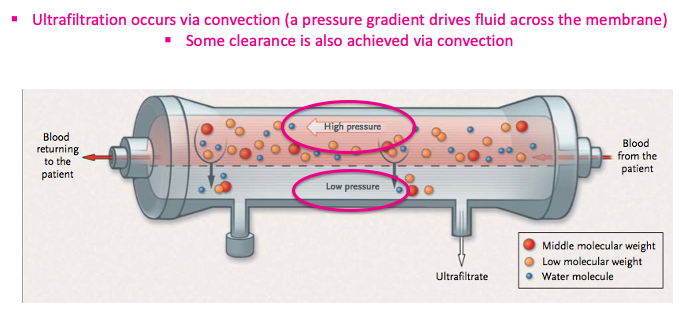
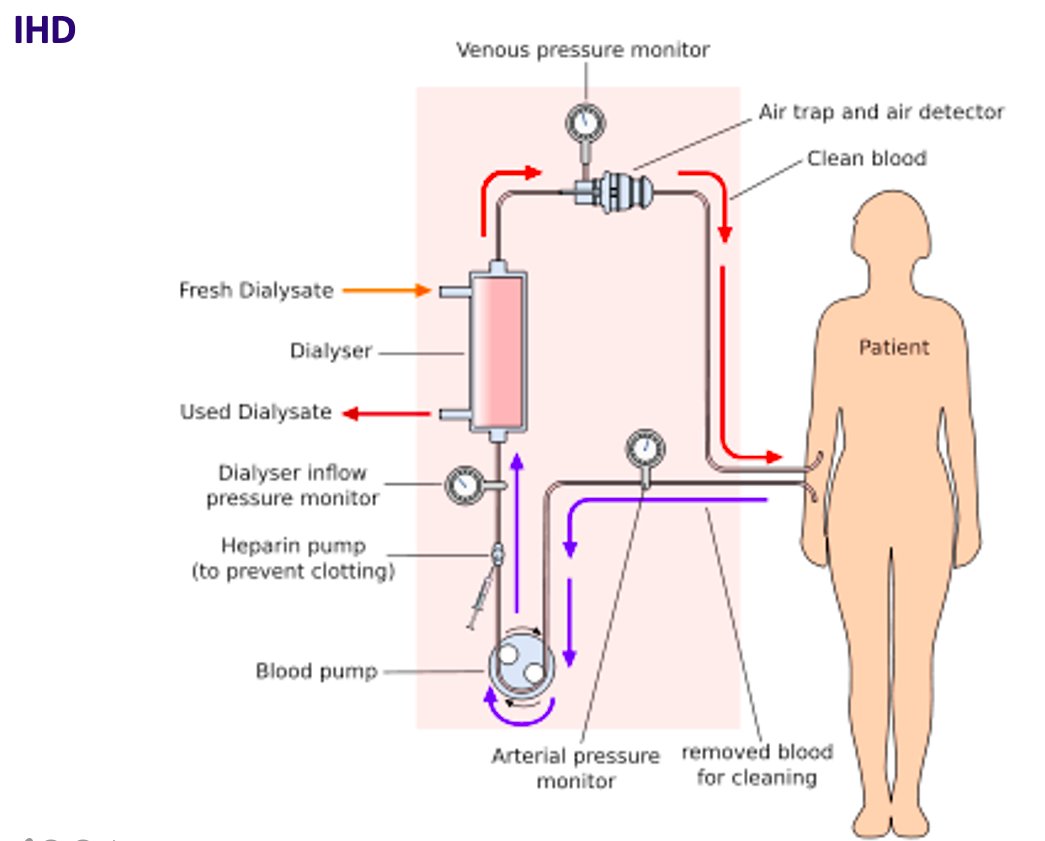 Access, blood flow, + dialysate flow rates (standard 800 cc/min)https://abs.twimg.com/emoji/v2/... draggable="false" alt="2⃣" title="Keycap digit two" aria-label="Emoji: Keycap digit two">Dialysate compositionhttps://abs.twimg.com/emoji/v2/... draggable="false" alt="3⃣" title="Keycap digit three" aria-label="Emoji: Keycap digit three">Ultrafiltration volumehttps://abs.twimg.com/emoji/v2/... draggable="false" alt="4⃣" title="Keycap digit four" aria-label="Emoji: Keycap digit four">Filter sizehttps://abs.twimg.com/emoji/v2/... draggable="false" alt="5⃣" title="Keycap digit five" aria-label="Emoji: Keycap digit five">Duration (standard 3.5hrs - though #COVID19 has forced shorter treatment times, affecting clearance)" title="7/ Here& #39;s what goes into the iHD order:https://abs.twimg.com/emoji/v2/... draggable="false" alt="1⃣" title="Keycap digit one" aria-label="Emoji: Keycap digit one">Access, blood flow, + dialysate flow rates (standard 800 cc/min)https://abs.twimg.com/emoji/v2/... draggable="false" alt="2⃣" title="Keycap digit two" aria-label="Emoji: Keycap digit two">Dialysate compositionhttps://abs.twimg.com/emoji/v2/... draggable="false" alt="3⃣" title="Keycap digit three" aria-label="Emoji: Keycap digit three">Ultrafiltration volumehttps://abs.twimg.com/emoji/v2/... draggable="false" alt="4⃣" title="Keycap digit four" aria-label="Emoji: Keycap digit four">Filter sizehttps://abs.twimg.com/emoji/v2/... draggable="false" alt="5⃣" title="Keycap digit five" aria-label="Emoji: Keycap digit five">Duration (standard 3.5hrs - though #COVID19 has forced shorter treatment times, affecting clearance)" class="img-responsive" style="max-width:100%;"/>
Access, blood flow, + dialysate flow rates (standard 800 cc/min)https://abs.twimg.com/emoji/v2/... draggable="false" alt="2⃣" title="Keycap digit two" aria-label="Emoji: Keycap digit two">Dialysate compositionhttps://abs.twimg.com/emoji/v2/... draggable="false" alt="3⃣" title="Keycap digit three" aria-label="Emoji: Keycap digit three">Ultrafiltration volumehttps://abs.twimg.com/emoji/v2/... draggable="false" alt="4⃣" title="Keycap digit four" aria-label="Emoji: Keycap digit four">Filter sizehttps://abs.twimg.com/emoji/v2/... draggable="false" alt="5⃣" title="Keycap digit five" aria-label="Emoji: Keycap digit five">Duration (standard 3.5hrs - though #COVID19 has forced shorter treatment times, affecting clearance)" title="7/ Here& #39;s what goes into the iHD order:https://abs.twimg.com/emoji/v2/... draggable="false" alt="1⃣" title="Keycap digit one" aria-label="Emoji: Keycap digit one">Access, blood flow, + dialysate flow rates (standard 800 cc/min)https://abs.twimg.com/emoji/v2/... draggable="false" alt="2⃣" title="Keycap digit two" aria-label="Emoji: Keycap digit two">Dialysate compositionhttps://abs.twimg.com/emoji/v2/... draggable="false" alt="3⃣" title="Keycap digit three" aria-label="Emoji: Keycap digit three">Ultrafiltration volumehttps://abs.twimg.com/emoji/v2/... draggable="false" alt="4⃣" title="Keycap digit four" aria-label="Emoji: Keycap digit four">Filter sizehttps://abs.twimg.com/emoji/v2/... draggable="false" alt="5⃣" title="Keycap digit five" aria-label="Emoji: Keycap digit five">Duration (standard 3.5hrs - though #COVID19 has forced shorter treatment times, affecting clearance)" class="img-responsive" style="max-width:100%;"/>
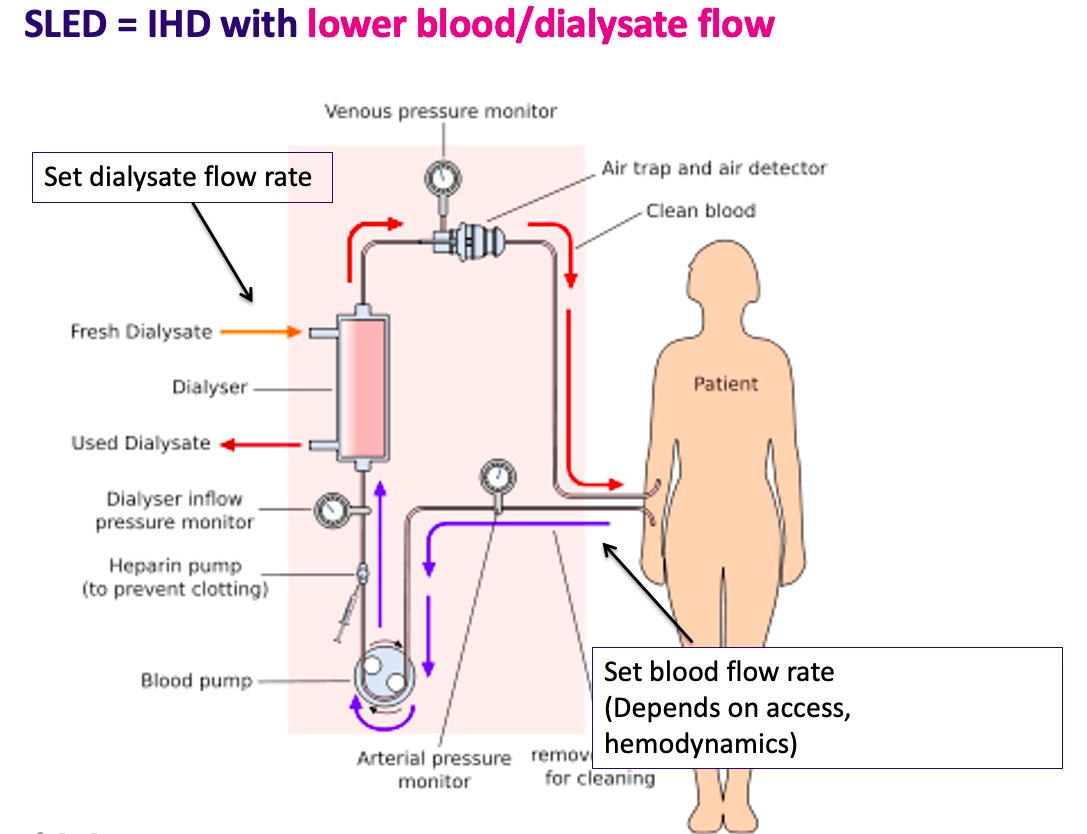
 REPLACEMENT FLUIDhttps://abs.twimg.com/emoji/v2/... draggable="false" alt="💥" title="Collision symbol" aria-label="Emoji: Collision symbol">" title="9/ Let& #39;s move on to the CONTINUOUS KRTs The Players: CVVH, CVVHD, & CVVHDFCVVH = continuous venovenous hemofiltration CVVH is the only continuous modality that does NOT use a dialysate. So how do we get clearance?https://abs.twimg.com/emoji/v2/... draggable="false" alt="💥" title="Collision symbol" aria-label="Emoji: Collision symbol">REPLACEMENT FLUIDhttps://abs.twimg.com/emoji/v2/... draggable="false" alt="💥" title="Collision symbol" aria-label="Emoji: Collision symbol">" class="img-responsive" style="max-width:100%;"/>
REPLACEMENT FLUIDhttps://abs.twimg.com/emoji/v2/... draggable="false" alt="💥" title="Collision symbol" aria-label="Emoji: Collision symbol">" title="9/ Let& #39;s move on to the CONTINUOUS KRTs The Players: CVVH, CVVHD, & CVVHDFCVVH = continuous venovenous hemofiltration CVVH is the only continuous modality that does NOT use a dialysate. So how do we get clearance?https://abs.twimg.com/emoji/v2/... draggable="false" alt="💥" title="Collision symbol" aria-label="Emoji: Collision symbol">REPLACEMENT FLUIDhttps://abs.twimg.com/emoji/v2/... draggable="false" alt="💥" title="Collision symbol" aria-label="Emoji: Collision symbol">" class="img-responsive" style="max-width:100%;"/>
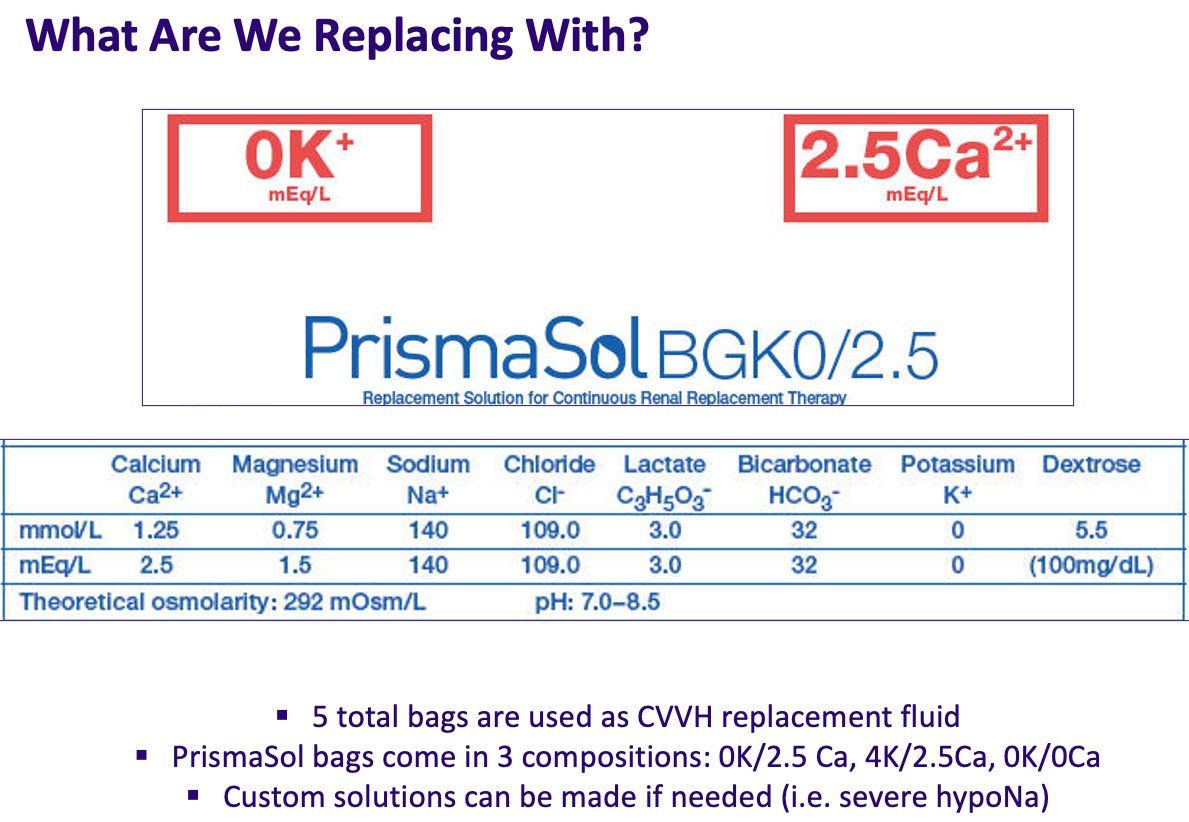 " title="10/ If you& #39;ve seen a pt connected to a #CVVH machine, you remember the huge bags hanging in the room - these are bags of replacement fluid that achieve clearance & are infused into the patient via the filter. Hospitals can purchase pre-made replacement fluid (example below) https://abs.twimg.com/emoji/v2/... draggable="false" alt="👇🏽" title="Down pointing backhand index (medium skin tone)" aria-label="Emoji: Down pointing backhand index (medium skin tone)">" class="img-responsive" style="max-width:100%;"/>
" title="10/ If you& #39;ve seen a pt connected to a #CVVH machine, you remember the huge bags hanging in the room - these are bags of replacement fluid that achieve clearance & are infused into the patient via the filter. Hospitals can purchase pre-made replacement fluid (example below) https://abs.twimg.com/emoji/v2/... draggable="false" alt="👇🏽" title="Down pointing backhand index (medium skin tone)" aria-label="Emoji: Down pointing backhand index (medium skin tone)">" class="img-responsive" style="max-width:100%;"/>
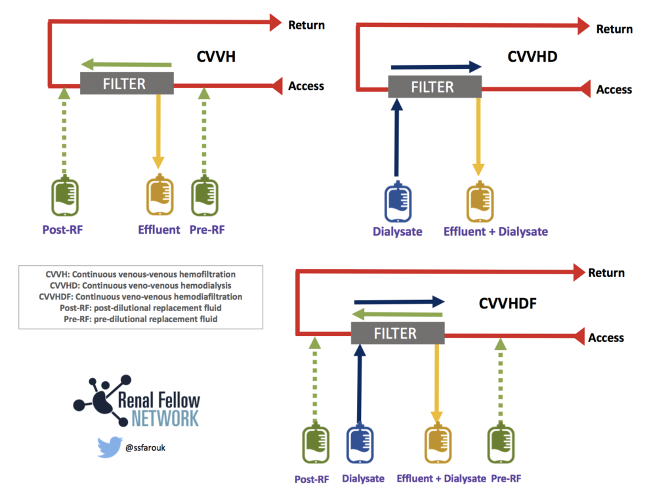 Convection + replacement fluid; https://abs.twimg.com/emoji/v2/... draggable="false" alt="⛔️" title="No entry" aria-label="Emoji: No entry">dialysateCVVHDhttps://abs.twimg.com/emoji/v2/... draggable="false" alt="✅" title="White heavy check mark" aria-label="Emoji: White heavy check mark">Dialysate + convection; https://abs.twimg.com/emoji/v2/... draggable="false" alt="⛔️" title="No entry" aria-label="Emoji: No entry"> replacement fluid CVVHDF: https://abs.twimg.com/emoji/v2/... draggable="false" alt="✅" title="White heavy check mark" aria-label="Emoji: White heavy check mark">Dialysate + convection + replacement fluid @RenalFellowNtwk #FOAMed" title="12/ The graphic below illustrates the differences between #CVVH, #CVVHD, and #CVVHDFCVVH: https://abs.twimg.com/emoji/v2/... draggable="false" alt="✅" title="White heavy check mark" aria-label="Emoji: White heavy check mark">Convection + replacement fluid; https://abs.twimg.com/emoji/v2/... draggable="false" alt="⛔️" title="No entry" aria-label="Emoji: No entry">dialysateCVVHDhttps://abs.twimg.com/emoji/v2/... draggable="false" alt="✅" title="White heavy check mark" aria-label="Emoji: White heavy check mark">Dialysate + convection; https://abs.twimg.com/emoji/v2/... draggable="false" alt="⛔️" title="No entry" aria-label="Emoji: No entry"> replacement fluid CVVHDF: https://abs.twimg.com/emoji/v2/... draggable="false" alt="✅" title="White heavy check mark" aria-label="Emoji: White heavy check mark">Dialysate + convection + replacement fluid @RenalFellowNtwk #FOAMed" class="img-responsive" style="max-width:100%;"/>
Convection + replacement fluid; https://abs.twimg.com/emoji/v2/... draggable="false" alt="⛔️" title="No entry" aria-label="Emoji: No entry">dialysateCVVHDhttps://abs.twimg.com/emoji/v2/... draggable="false" alt="✅" title="White heavy check mark" aria-label="Emoji: White heavy check mark">Dialysate + convection; https://abs.twimg.com/emoji/v2/... draggable="false" alt="⛔️" title="No entry" aria-label="Emoji: No entry"> replacement fluid CVVHDF: https://abs.twimg.com/emoji/v2/... draggable="false" alt="✅" title="White heavy check mark" aria-label="Emoji: White heavy check mark">Dialysate + convection + replacement fluid @RenalFellowNtwk #FOAMed" title="12/ The graphic below illustrates the differences between #CVVH, #CVVHD, and #CVVHDFCVVH: https://abs.twimg.com/emoji/v2/... draggable="false" alt="✅" title="White heavy check mark" aria-label="Emoji: White heavy check mark">Convection + replacement fluid; https://abs.twimg.com/emoji/v2/... draggable="false" alt="⛔️" title="No entry" aria-label="Emoji: No entry">dialysateCVVHDhttps://abs.twimg.com/emoji/v2/... draggable="false" alt="✅" title="White heavy check mark" aria-label="Emoji: White heavy check mark">Dialysate + convection; https://abs.twimg.com/emoji/v2/... draggable="false" alt="⛔️" title="No entry" aria-label="Emoji: No entry"> replacement fluid CVVHDF: https://abs.twimg.com/emoji/v2/... draggable="false" alt="✅" title="White heavy check mark" aria-label="Emoji: White heavy check mark">Dialysate + convection + replacement fluid @RenalFellowNtwk #FOAMed" class="img-responsive" style="max-width:100%;"/>
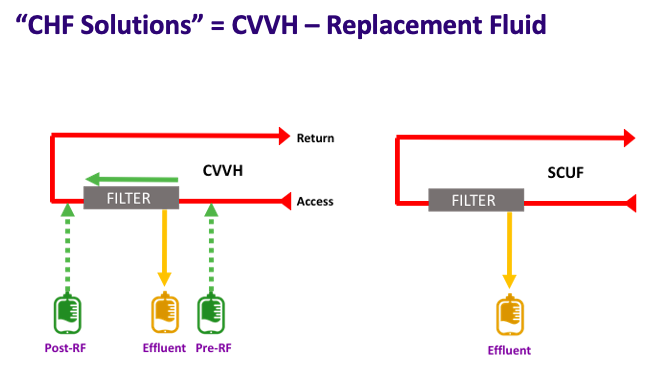
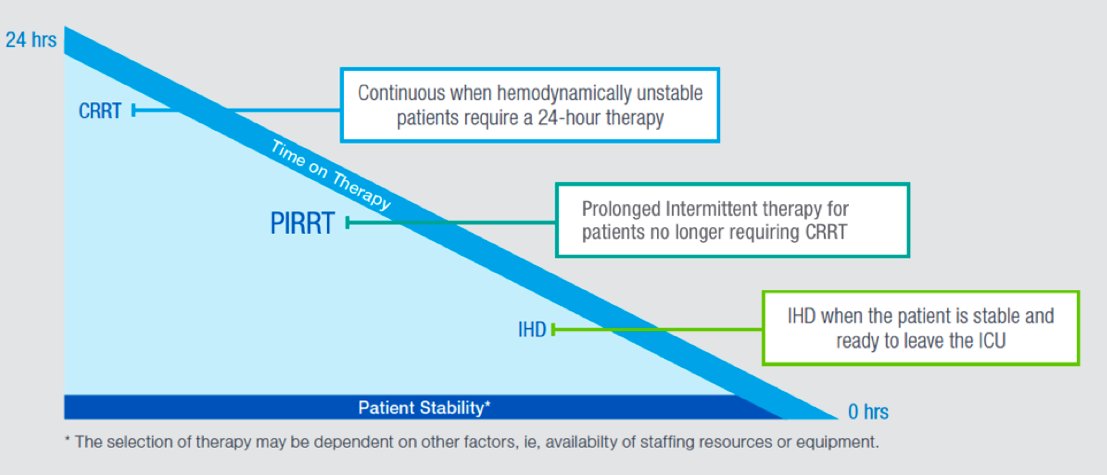 (e.g. 100 cc/hr vs 1L/hr)PIRRT = "middle ground" and uses higher RF rates to lower tx times & has been used during #COVID19 pandemic to maximize CKRT machine use https://abs.twimg.com/emoji/v2/... draggable="false" alt="👇🏽" title="Down pointing backhand index (medium skin tone)" aria-label="Emoji: Down pointing backhand index (medium skin tone)"> https://www.nxstage.com/hcp/thera..." title="14/ Compared to iHD, continuous KRT will achieve slower clearance & volume removal https://abs.twimg.com/emoji/v2/... draggable="false" alt="🐢" title="Turtle" aria-label="Emoji: Turtle"> (e.g. 100 cc/hr vs 1L/hr)PIRRT = "middle ground" and uses higher RF rates to lower tx times & has been used during #COVID19 pandemic to maximize CKRT machine use https://abs.twimg.com/emoji/v2/... draggable="false" alt="👇🏽" title="Down pointing backhand index (medium skin tone)" aria-label="Emoji: Down pointing backhand index (medium skin tone)"> https://www.nxstage.com/hcp/thera..." class="img-responsive" style="max-width:100%;"/>
(e.g. 100 cc/hr vs 1L/hr)PIRRT = "middle ground" and uses higher RF rates to lower tx times & has been used during #COVID19 pandemic to maximize CKRT machine use https://abs.twimg.com/emoji/v2/... draggable="false" alt="👇🏽" title="Down pointing backhand index (medium skin tone)" aria-label="Emoji: Down pointing backhand index (medium skin tone)"> https://www.nxstage.com/hcp/thera..." title="14/ Compared to iHD, continuous KRT will achieve slower clearance & volume removal https://abs.twimg.com/emoji/v2/... draggable="false" alt="🐢" title="Turtle" aria-label="Emoji: Turtle"> (e.g. 100 cc/hr vs 1L/hr)PIRRT = "middle ground" and uses higher RF rates to lower tx times & has been used during #COVID19 pandemic to maximize CKRT machine use https://abs.twimg.com/emoji/v2/... draggable="false" alt="👇🏽" title="Down pointing backhand index (medium skin tone)" aria-label="Emoji: Down pointing backhand index (medium skin tone)"> https://www.nxstage.com/hcp/thera..." class="img-responsive" style="max-width:100%;"/>


